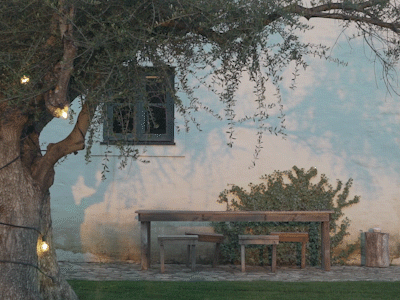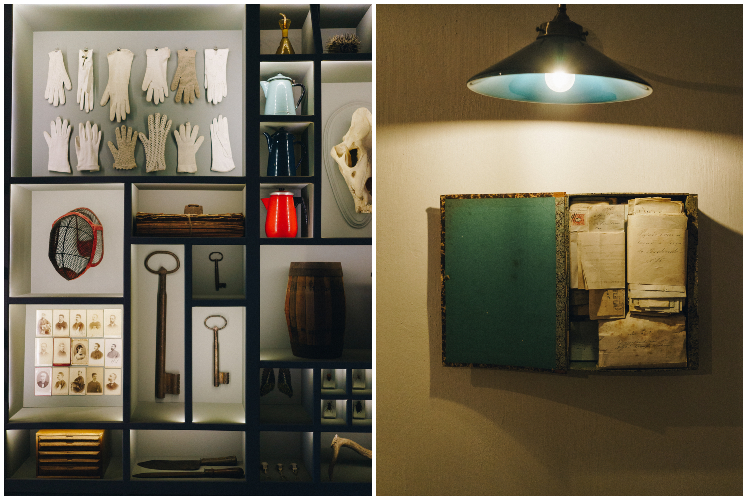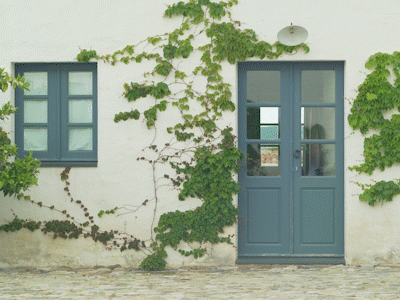Our shadows ride silhouetted beside us: four legs, one body. Everywhere, the sound of silence, save for the swish of hooves against grass. We pass gnarled olive trees and smooth granite boulders standing sentinel beside the sandy track. One moves. My eyes adjust. A herd of Alentejana cows stares back at us.
Up a hill and onto a clearing, we gaze down across the Alqueva Dam – the largest lake in Western Europe – its surface still and silvery in this light. It could be midday, such is the clarity of our outlines. But instead we ride under the full moon of summer: a giant torchlight guiding us through the night.
I’m riding out with Pedro Ferreira, head horseman at São Lourenço do Barrocal, a luxury ‘farmscape hotel and retreat’ in the Alentejo, Portugal’s rural heartland.
The reason why this unusual equestrian experience is possible is because the hotel is set within the Alqueva Dark Sky Reserve: the world’s first ‘starlight tourism destination’.
Pedro is a man of few words, who says his favourite thing about working at São Lourenço is the silence. But his gentle demeanour only adds to the atmosphere of riding at night.
Our equine escorts for the evening are Lusitano thoroughbreds, the oldest saddle horse in the world – native to Portugal and ridden for over 5,000 years. Pedro was lured here only recently from central Portugal. But like many people I speak to, he says one visit to the hotel – and a meeting with its affable owner, José António Uva – convinced him it was the right decision to stay.
I take a walk around the farm with José António and very quickly understand what they mean. This vast estate has been in José’s family for two centuries. In 1820, his ancestor, Manuel Mendes Papança, bought 22,000 acres of land surrounding the hilltop village of Monsaraz, which still rises above the Alentejo flatlands today.
A generous sort, Manuel gave away management of the fields for free to local farmers, with one proviso: that they use it to plant vines. And so, the area’s viticulture – now a mainstay of the regional economy – was born.
However, in a twist of fate, following the Carnation Revolution of 1974, the family lost the farm. ‘At that stage,’ José explains, ‘we got democracy in Portugal. But the new socialist government was radical and couldn’t figure out how to make the economy work. So they took back the farms and nationalised the land.’
Without effective leadership, the monte of São Lourenço do Barrocal – the name given to rural estates in the Alentejo – became squatted in and fell into disrepair, until José’s family got it back in 1991.
It was during these years that the idea for night riding was laid. Now based in Lisbon, José and his family would return to São Lourenço on holidays to play amid the ruins and camp amid the meadows. ‘When we were kids, we used to walk in the evenings under the full moon and swim in the lake. So I thought, why not try that with horses.’
José came back permanently in 2002, having worked abroad in finance.
‘At that stage, I was a single man, and I lived here by myself for two years, studying the seasons and trying to figure out what would work.’
He met his wife, co-owner of Lisbon-based interior design company Anahory Almeida, during this time, while residing in a ruined outbuilding by the pool. ‘I had to convince Ana this was a reasonable place to be living,’ José deadpans.
Jokes aside, José is a man whose powers of persuasion should not be underestimated. He convinced the Pritzker-prize-winning architect Eduardo Souto de Moura to transform the ruins into a hotel; signed organic wellness doyenne Susanne Kaufmann to do the spa; enticed Alentejan chef José Júlio Vintém into the kitchen; and recruited Monocle and Wallpaper* publisher Tyler Brûlé to help brand and get the message out.
Not bad for a man living in the pool house.
‘With Souto de Moura,’ José explains, ‘he believes that buildings are meant to be minimalist and true to a pure aesthetic. But we also wanted to give it a warmth, that’s perhaps less characteristic of Eduardo’s work, but was key to our vision.’
So after the renovation, Ana and Eduardo started working together to find ways to celebrate Portuguese crafts and vernacular traditions. It’s a partnership that’s paid off, with the architect’s restrained whitewashed walls and earthen floors, blending effortlessly with Ana’s artful, rustic-chic interiors.
What really gives the place character, though, is Ana’s addition of family artefacts: framed sepia photos of José’s ancestors, time-worn pictures of early farm workers, shelves and walls stocked with items uncovered during the renovation, including antique stamps and letters used by labourers to send messages back home.
Looking across the monte, José explains the original farm layout. ‘In the early 1900s, the workers lived on the north side of the Rua do Monte – the main cobbled street – and the livestock was kept on the south side, so that the prevailing northerly winds would take odours away.’
Accordingly, today, the Susanne Kaufmann spa occupies the spot where seasonal workers would stay; the bar is on the site of the old olive press and winery; the farm-to-table restaurant is in an old cow shed.
Perhaps the biggest compliment I can pay to São Lourenço do Barrocal today, is that when you arrive it still feels very agricultural: a functioning farming village enveloping a luxury hotel.
At dusk, guests emerge from their cottages to nod at neighbours, couples sit on benches drinking beers, children play in the meadows and pedal up and down the cobbles on free-to-use bicycles.
It has a quality quite unlike any other hotel. Largely because, behind the scenes, it’s still very much a working farm, with groves that produce olive oil, vineyards that make wine, fruit-bearing orchards and a herd of pedigree cows.
‘The biggest mistake I made at the beginning was trying to follow the rules of what traditional hospitality should be like,’ says José. ‘We hired consultants, who said: this is the formula, if you follow this, it will work. But I thought, this is bonkers…’
‘We are not going to destroy a place to turn it into a hotel. The hotel has to fit the land’.
In total, the renovation took 14 years, with São Lourenço do Barrocal officially opening two years ago. But nothing quite sums up José’s singular dedication quite like the tiles.
Look up from São Lourenço’s whitewashed walls, past its blue shuttered windows, to the roof, and you’ll spot terracotta tiles: 500,000 of them to be exact. Modern manufacturing methods meant that José couldn’t find a mould to replicate the thinner, original tiles. So instead he partnered with a local man, who had a truck, and sent him off driving around Portugal to negotiate with farms. Armed with 35 cents per tile (and abundant wine), he delivered 100,000 a year until the roof was complete, restored back to its original state. Stories like this make you understand why São Lourenço took 14 years to perfect.
Over the next few days I settle into the gentle pace of farm life. I picnic beside the old bread oven, taste wine with award-winning vinter Susana Esteban, stroll through the kitchen-garden with chef José Júlio Vintém and visit the hilltop town of Monsaraz for views across vineyards and fields that José’s ancestor bought all those years ago.
Finally, I grab one of the vintage bikes and rattle around the estate, freewheeling through meadows thick with lavender, daisies and poppies. Collapsing onto a boulder, face upturned to the sun, I’m surrounded by the hum of bees and birdsong: the sound of silence that Pedro finds so special.
Through revolution, ruin, renovation and now rustic-chic hotel, this land, these fields, have remained the same. Only now they cradle a farm-fresh hotel for the 21st century.
Written and produced by Laura Holt
Photography by Louis Sheridan
Videography by Kelly Noecker
Additional videography by Chyna Powers
For more ways to experience summer 2018, check out a Californian take on utopia at Native hotel in Malibu; explore Tuscany’s land of plenty at Borgo Pignano in Italy; and stay tuned for the world’s best oysters at a noble French château…











